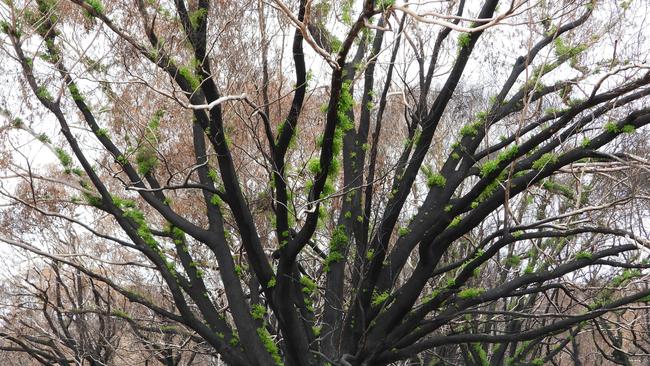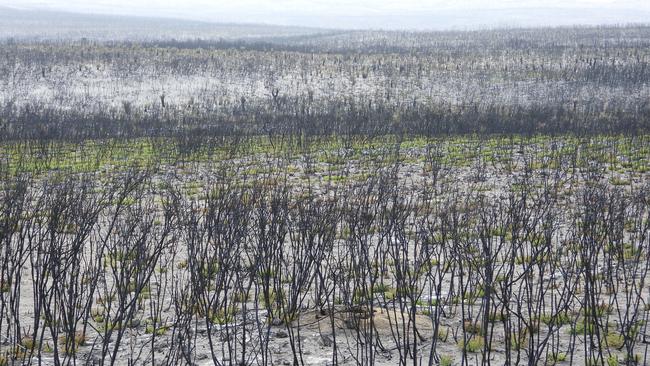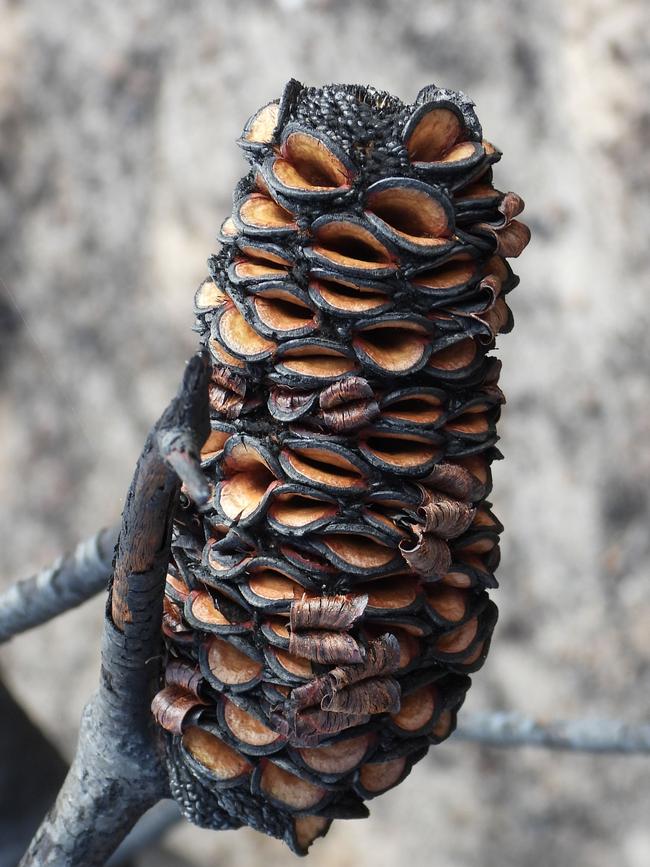University of Adelaide fires up debate over bushfire risk as signs of life return on Kangaroo Island
Vital signs of life are returning to bushfire-ravaged Kangaroo Island as scientists explore better ways to manage risk in an increasingly hostile climate.
Bushfire Support
Don't miss out on the headlines from Bushfire Support. Followed categories will be added to My News.
Fresh shoots are sprouting from blackened gums and grass trees are green after recent rain on Kangaroo Island, offering hope that life will rebound in time.
Fresh shoots are sprouting from blackened gums and grass trees are green after recent rain on Kangaroo Island, offering hope that life will rebound in time.
But as the smoke clears, scientists and engineers at the University of Adelaide are “firing debate” about how best to manage bushfire risk in an increasingly hostile climate.
Associate Professor Douglas Bardsley believes the “horrendous summer” of bushfires now presents us with an opportunity.
“I think there’s a sense of doom emerging in the Australian community that we don’t have mechanisms to respond, when that's not necessarily true,” he said.
“We do know we could do this better; we haven’t really started to incorporate risk into our settlement planning yet, so there are lots of gaps we could fill.”
The gaps in planning he identified include:
LITTLE requirement for residential and transport infrastructure planning to account for bushfire risk, beyond constraints to building practices
NO requirement to inform new residents of the bushfire risk in an area where they are planning to live, and
NO requirement for environment conservation staff to be consulted on new housing developments.
Dr Bardsley believes the state review of the planning code offers a chance to plan land use more effectively and accommodate the emerging risk of bushfires, especially in new developments.
But he’s also worried about suburbs that are now forests, with only one way out, such as Mitcham Hills, Mount Barker, Bridgewater and Stirling.
Environmental engineer Professor Holger Maier, a research leader for the national Bushfire and Natural Hazards Co-operative Research Centre, wants to see far greater investment in mitigation of risk.
That would include planning land use; changing building codes; fuel load reduction and education.


Environment Institute director, botanist Bob Hill, searched for signs of life on bushfire-ravaged KI last week.
He found yaccas survived “because they’re tough as old boots”, but raised concerns about the lack of banksia seed, especially in Flinders Chase National Park.
“It’s quite shocking how extensive the fire was. From Remarkable Rocks you really can’t see any living vegetation in any direction,” he said.
“The good news is that all the eucalypts are coming back from the base … they are going to be OK, but that’s pretty much all there is.”
He had hoped to find the big woody cones of banksia trees, which release their seed after fire, but there was no sign of them.
“So if they were there, they have completely burnt away and there can’t possibly be a seed bank of banksias in that region,” Professor Hill said.
Fortunately the fire was not so intense at other sites such as Vivonne Bay, where the banksias had released viable seed.
Prof Hill has suggested propagating plants to produce seed for replanting, which would be a long-term project.
He remains deeply concerned for the future as fires become hotter, more intense and frequent.

The free public lecture “Bushfires: Firing Debate” is fully booked, but can be watched live Tuesday March 10 at 5.30pm on the Research Tuesdays’ Facebook page or accessed after the event on YouTube.

